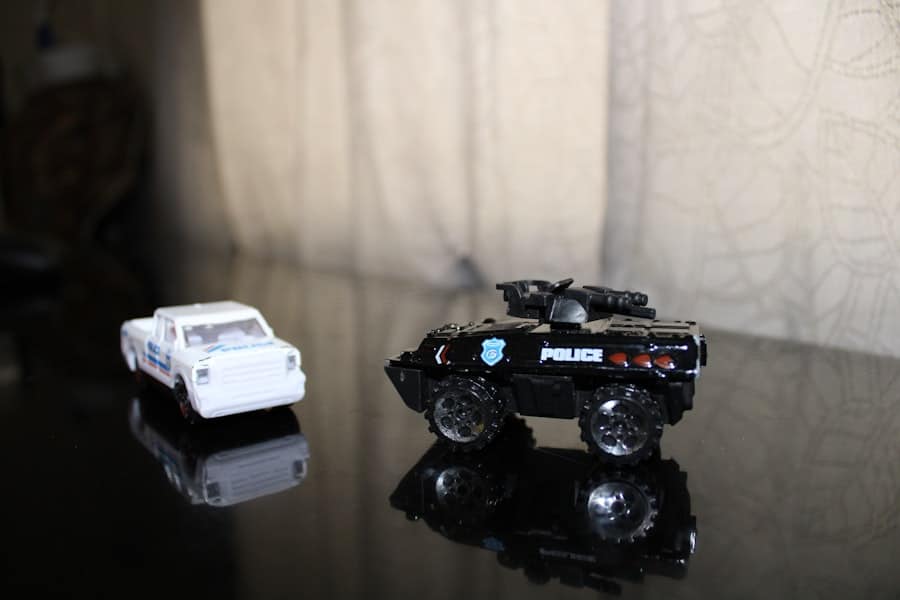Cobots, or collaborative robots, represent a significant evolution in the field of robotics, designed specifically to work alongside humans in a shared workspace.
They are equipped with advanced sensors, machine learning capabilities, and user-friendly interfaces that allow them to adapt to various tasks and environments.
This adaptability makes cobots particularly valuable in settings where flexibility and human oversight are essential. The design philosophy behind cobots emphasizes collaboration rather than replacement. They are intended to augment human capabilities, taking on repetitive, strenuous, or precision-demanding tasks while allowing human workers to focus on more complex and creative aspects of their jobs.
This synergy between humans and machines not only enhances productivity but also fosters a more engaging work environment. Cobots can be found in various industries, from manufacturing and logistics to healthcare and agriculture, showcasing their versatility and potential to transform traditional workflows.
Key Takeaways
- Cobots are collaborative robots designed to work alongside humans in a shared workspace, performing repetitive or dangerous tasks to enhance productivity and safety.
- The benefits of human-robot collaboration include increased efficiency, improved safety, and the ability to handle complex tasks with precision and consistency.
- Safety considerations in human-robot collaboration are crucial, and cobots are equipped with sensors and safety features to minimize the risk of accidents and injuries.
- Examples of cobots in industry include assembly line assistance, material handling, and quality control, demonstrating their versatility and potential in various sectors.
- The future of cobots in human-robot collaboration holds promise for continued advancements in technology, integration with AI, and expansion into new industries, but challenges and limitations such as cost and complexity remain.
The Benefits of Human-Robot Collaboration
The integration of cobots into the workplace offers numerous advantages that extend beyond mere efficiency gains.
Cobots can operate continuously without fatigue, performing repetitive tasks with high precision and speed.
This capability allows human workers to allocate their time to more strategic activities, such as problem-solving or innovation. For instance, in a manufacturing setting, a cobot might handle the assembly of components while human workers focus on quality control and design improvements. Moreover, human-robot collaboration can lead to improved job satisfaction among employees.
By relieving workers of monotonous tasks, cobots enable them to engage in more meaningful work that requires critical thinking and creativity. This shift can lead to higher morale and lower turnover rates, as employees feel more valued and fulfilled in their roles. Additionally, cobots can be programmed to learn from human actions, allowing them to adapt to individual work styles and preferences, further enhancing the collaborative experience.
Safety Considerations in Human-Robot Collaboration

Safety is a paramount concern when integrating cobots into workplaces where humans are present. Unlike traditional robots that operate behind safety barriers or cages, cobots are designed to work in close proximity to humans, necessitating robust safety measures. Manufacturers have incorporated various technologies to ensure safe interactions between humans and robots.
For example, many cobots are equipped with force-limiting technology that allows them to detect when they come into contact with a person or object, automatically reducing their speed or stopping altogether to prevent injury. In addition to physical safety features, training and awareness programs are crucial for fostering a safe collaborative environment. Workers must be educated about the capabilities and limitations of cobots, as well as best practices for interacting with them.
This training can include simulations and hands-on experiences that help employees understand how to work alongside these machines effectively. Furthermore, ongoing assessments of workplace safety protocols are essential as new technologies emerge and operational practices evolve.
Examples of Cobots in Industry
Cobots have found applications across a wide range of industries, demonstrating their versatility and effectiveness in enhancing productivity and safety. In manufacturing, for instance, companies like Universal Robots have developed cobots that assist with tasks such as assembly, welding, and packaging. These robots can be easily programmed for different tasks and can be redeployed quickly as production needs change.
A notable example is the use of cobots in automotive assembly lines, where they work alongside human workers to install components with precision while ensuring that workers can focus on more complex assembly tasks. In the healthcare sector, cobots are being utilized to assist medical professionals in various capacities. For example, robotic systems like the da Vinci Surgical System enable surgeons to perform minimally invasive procedures with enhanced precision and control.
These systems allow surgeons to focus on critical decision-making while the robot handles delicate movements. Additionally, cobots are being employed in hospitals for tasks such as medication dispensing and patient monitoring, freeing up healthcare staff to provide more personalized care.
The Future of Cobots in Human-Robot Collaboration
The future of cobots appears promising as advancements in artificial intelligence (AI), machine learning, and sensor technology continue to evolve. As these technologies improve, cobots will become increasingly capable of performing complex tasks autonomously while still collaborating effectively with human workers. For instance, future cobots may be able to analyze real-time data from their environment and make decisions based on that information, further enhancing their utility in dynamic work settings.
Moreover, the trend toward remote work and automation is likely to drive the adoption of cobots across various sectors. As businesses seek ways to maintain productivity while ensuring employee safety—especially in light of recent global events—cobots can provide a solution that balances efficiency with human oversight. The integration of cobots into everyday workflows will likely become more seamless as user-friendly interfaces and intuitive programming tools make it easier for non-experts to deploy these technologies.
Challenges and Limitations of Cobots

Despite their many advantages, the implementation of cobots is not without challenges. One significant limitation is the initial cost associated with acquiring and integrating these systems into existing workflows. While cobots can lead to long-term savings through increased efficiency and reduced labor costs, the upfront investment can be a barrier for small and medium-sized enterprises (SMEs).
Additionally, organizations must consider the costs associated with training employees to work effectively alongside these new technologies. Another challenge lies in the technological limitations of current cobot designs. While they excel at repetitive tasks, many cobots still struggle with complex decision-making or tasks requiring fine motor skills beyond their programming capabilities.
This limitation necessitates careful consideration when determining which tasks are suitable for automation versus those that require human intervention. Furthermore, as cobots become more prevalent, there may be concerns regarding job displacement among workers who fear that automation could replace their roles entirely.
Training and Education for Human-Robot Collaboration
To maximize the benefits of human-robot collaboration, comprehensive training programs are essential for both current employees and future workers entering the workforce. Organizations must invest in educational initiatives that equip employees with the skills needed to work effectively alongside cobots. This training should encompass not only technical skills related to operating and programming cobots but also soft skills such as communication and teamwork that are vital for successful collaboration.
Educational institutions also play a crucial role in preparing the next generation of workers for a future where human-robot collaboration is commonplace. Integrating robotics education into curricula at various levels—from primary schools to universities—can help cultivate an understanding of robotics technology among students early on. Programs that emphasize hands-on experience with cobots can foster interest in STEM fields while ensuring that future workers are well-prepared for the evolving job market.
Ethical and Social Implications of Cobots
The rise of cobots brings forth a range of ethical and social implications that warrant careful consideration. One primary concern is the potential impact on employment dynamics within industries adopting these technologies. While cobots can enhance productivity and create new job opportunities focused on oversight and maintenance, there is a legitimate fear that they may displace certain roles altogether.
Addressing these concerns requires proactive measures from both businesses and policymakers to ensure that workers are supported through transitions caused by automation. Additionally, ethical considerations surrounding data privacy and security must be addressed as cobots become more integrated into workplaces. Many cobots rely on data collection and analysis to function effectively; thus, safeguarding sensitive information becomes paramount.
Organizations must establish clear guidelines regarding data usage while ensuring compliance with regulations such as GDPR (General Data Protection Regulation) to protect employee privacy rights. As society continues to navigate the complexities introduced by collaborative robots, it is essential for stakeholders—including businesses, educators, policymakers, and workers—to engage in open dialogues about the implications of this technology. By fostering an inclusive conversation about the future of work in an era defined by human-robot collaboration, we can collectively shape a landscape that prioritizes both innovation and ethical responsibility.
In the rapidly evolving landscape of automation, the article “Exploring the Role of Cobots in Human-Robot Collaboration” delves into the transformative impact of collaborative robots, or cobots, in various industries. For those interested in understanding broader technological trends that are shaping the future of work and collaboration, the article on Top Trends on LinkedIn 2023 provides valuable insights. It highlights key developments and innovations that are influencing professional environments, including the integration of advanced technologies like cobots, which are designed to work alongside humans, enhancing productivity and safety.
FAQs
What are cobots?
Cobots, short for collaborative robots, are robots designed to work alongside humans in a shared workspace. They are specifically built to interact with and assist humans in various tasks.
What is the role of cobots in human-robot collaboration?
Cobots play a crucial role in human-robot collaboration by enhancing productivity, improving safety, and enabling more efficient use of resources. They can perform repetitive or physically demanding tasks, freeing up humans to focus on more complex and strategic activities.
How do cobots enhance safety in the workplace?
Cobots are equipped with advanced sensors and technology that allow them to detect and respond to the presence of humans in their vicinity. This capability helps prevent accidents and injuries by ensuring safe interaction between humans and robots.
What are some common applications of cobots in various industries?
Cobots are used in a wide range of industries, including manufacturing, healthcare, logistics, and agriculture. They can be found performing tasks such as assembly, packaging, material handling, and even assisting surgeons in operating rooms.
What are the benefits of integrating cobots into the workforce?
Integrating cobots into the workforce can lead to increased productivity, improved product quality, and reduced operational costs. Additionally, cobots can help address labor shortages and create new opportunities for human workers to upskill and take on more complex roles.

